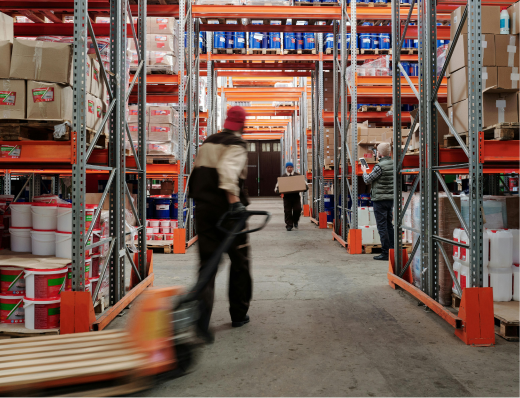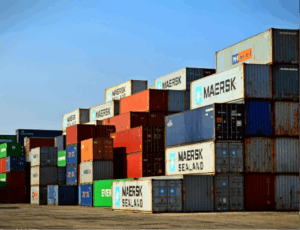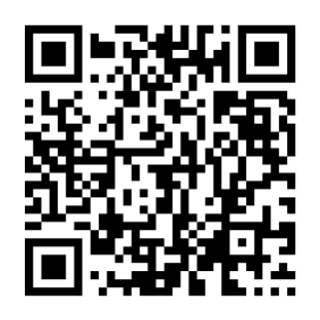Online shopping is booming, and so are returns. The National Retail Federation (NRF) estimates that U.S. consumers returned $890 billion worth of goods in 2024.
Balancing consumer expectations against the operational challenges of returns management has proven tricky. Yet the pressure is on: According to the NRF report, 76% of consumers consider whether returns are free when deciding where to shop.
That’s why retailers are upgrading their returns management systems, with a heavy focus on automating processes.
In this article, we’ll explore how barcode technology helps retailers streamline returns management processes and how they can use it to gain a competitive edge.
The rising tide of returns and the challenges of reverse logistics
Returns management covers a range of workflows. Establishing customer contact, initiating returns, the shipping itself, inspecting and repackaging, refurbishing, or disposing of return items – all while keeping inventory levels up to date.
Let’s take a look at the major hurdles.
- Inefficiency of manual processes: Manual data processing is generally slow and prone to error. The manual checking and logging of returning items is a major bottleneck in reverse logistics. Mistakes lead to additional delays and item loss. This slows down returns processing, delaying refunds and so directly impacting customer satisfaction.
- Poor inventory visibility: Slow processing, in turn, hampers inventory management. Even if items are physically already back in warehouses, they cannot move further as long as inventory levels are not updated.
- Unreliable product tracking: Poor tracking further prolongs the “on-hold” status of returned items. Items that are incorrectly stocked or otherwise misplaced cannot be resold, resulting in a financial loss for the retailer.
- High labor costs and resource requirements: Manual returns processing requires a substantial workforce for the basic operations and to correct the delays caused by the errors. Against the backdrop of large return volumes, keeping costs low is crucial: Customers will not accept return charges that, to them, seem unjustifiably high.
Delays in returns processing directly impact customer trust and satisfaction. Retailers whose processes aren’t seamless risk negative ratings and declining customer loyalty.
Leveraging technology to automate reverse logistics
Retailers are turning to modern software solutions to streamline their returns management processes. Barcode systems are the obvious choice, as they have already been tried and tested in various operations related to reverse logistics, including inventory keeping, warehouse management, and data capture for item tracking purposes.
Mobile barcode scanning as a reverse logistics software solution
Retailers that decide to invest in barcode systems – or upgrade existing ones – face a plethora of choices. There are various types of dedicated scanners, including laser scanners, CCD scanners, and imager scanners. They may do the job, but are necessarily limited to a single purpose.
Mobile barcode scanners are a far more versatile alternative.
Thanks to their high-quality cameras and processing power, ordinary smartphones can be turned into enterprise-grade barcode scanners simply by running a web or mobile app.
Compared to manual handling, as well as to their dedicated hardware cousins, mobile barcode scanners enhance the reliability and efficiency of returns management processes. Here are some of the benefits they bring to the table:
- Instant data capture: Scanning the barcodes on the product tags of returned items enables instant data submission to a backend, such as inventory management systems. Returns are thus immediately reflected in stock levels, which helps prevent discrepancies and speeds up restocking.
- Error reduction: Mobile barcode scanning minimizes manual errors, such as returned items being identified incorrectly or misplaced.
- Cost savings: Barcode scanning helps automate returns management workflows, thus reducing labor costs and offsetting the necessary investments. Mobile barcode scanning software is even more cost-efficient, as it leverages smartphones rather than expensive single-purpose devices.
- Smartphones are multi-purpose devices: Unlike dedicated hardware, smartphones can be used for various operations, including communication, navigation, and more. Similarly, the same barcode scanner software can be integrated with several warehouse management system apps or other backend applications.
- Enhanced analytics and decision-making: Barcode scanning generates accurate data for returns management. Retailers can use this data to identify trends and areas for improvement.
- Improved customer experience: Higher speed, lower costs, and greater accuracy ultimately enhance the customer experience, fostering satisfaction and loyalty.

How to choose barcode scanner software for returns management
The various operations of returns management require a highly versatile barcode scanning solution.
With its highly customizable set of ready-to-use UI components, the Scanbot Barcode Scanner SDK can be integrated into your web or mobile app within hours.
The SDK excels in real-world conditions. It scans damaged, tiny, or distant barcodes quickly and accurately, and performs reliably in low-light conditions.
Thanks to on-device processing, the SDK is the ideal solution for poorly networked or offline environments, such as warehouses. Backend systems can be updated as soon as connectivity is restored.
The Scanbot SDK comes with several scan modes specifically designed to speed up workflows and boost efficiency.
Batch Scanning enables users to scan multiple barcodes in quick succession, ideal for scanning a whole series of returned items without disruption.
Similarly, Multi Scanning captures several barcodes all at once, streamlining operations such as bulk returns processing.
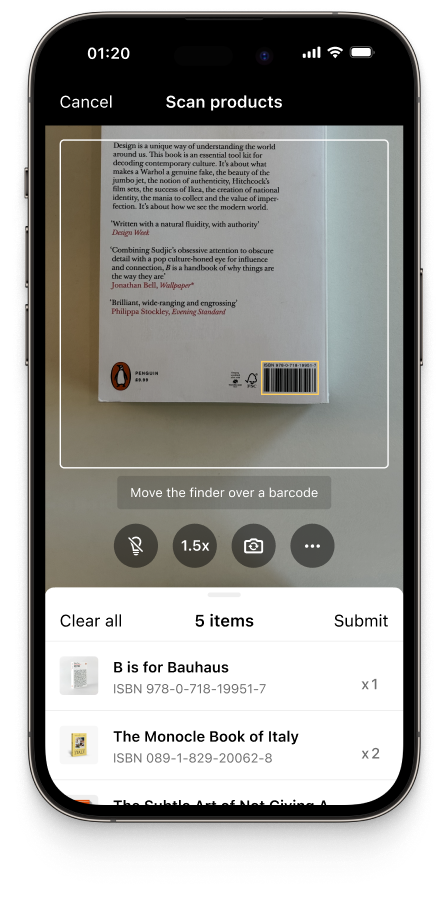
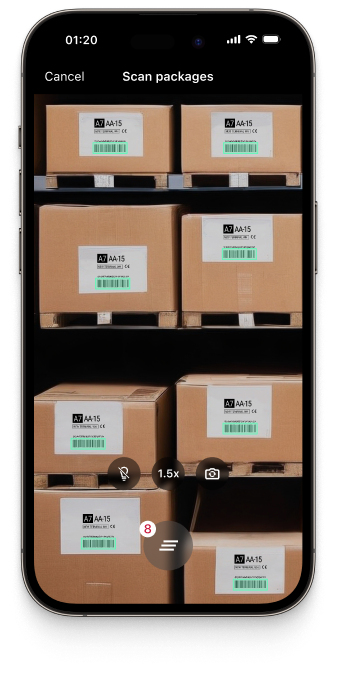
Find & Pick, where the SDK visually highlights and scans only the particular items being requested, and Scan & Count, which counts items with the same barcode, are ideal for updating inventory and streamlining warehouse workflows.
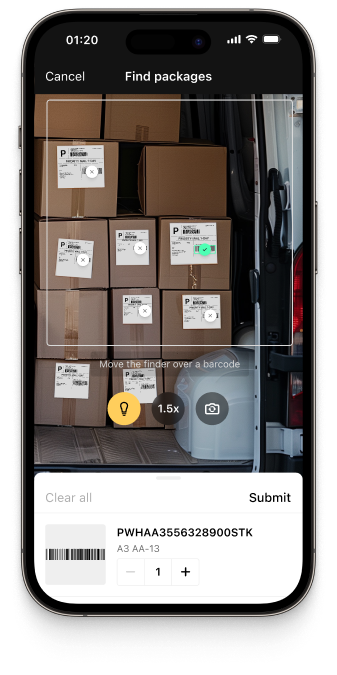
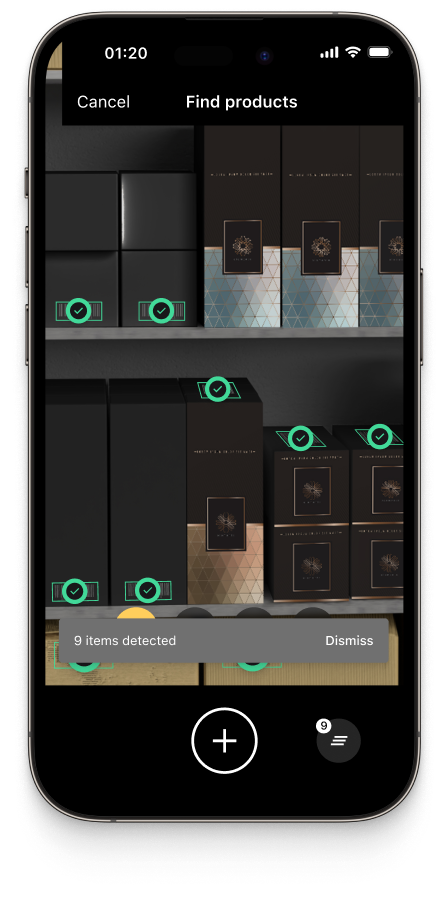
Want to experience how the Scanbot Barcode Scanner SDK performs for yourself? Try our free barcode scanner demo apps or discuss your use case directly with us at sdk@scanbot.io.
